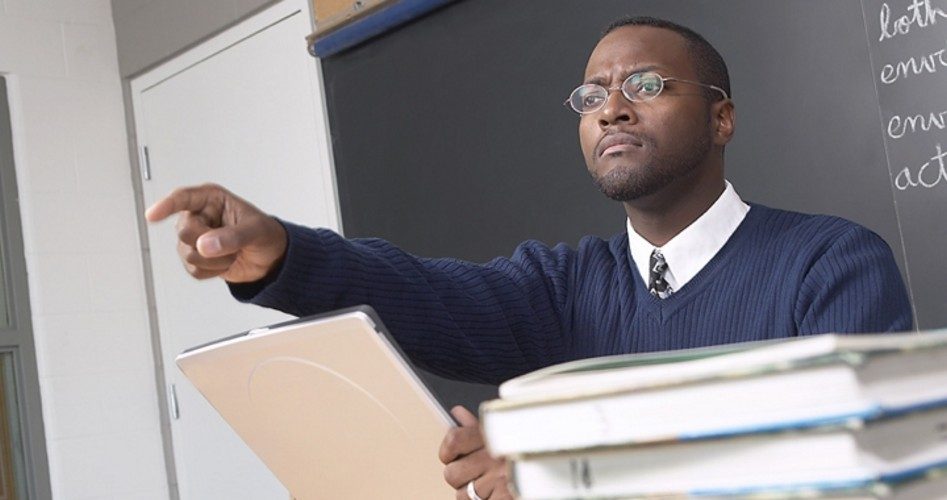
We’ve all heard of affirmative action and apportioning jobs based on racial quota. But now Minneapolis school officials want to mete out punishment based on racial quota. It’s part of a wider movement — orchestrated by the federal government — to reduce the number of suspensions of black and Hispanic students. Breitbart News Network’s Warner Todd Huston reports on the story, writing:
The Minneapolis public school system [MPS] announced a major new district-wide policy for disciplining students: any suspension of a non-white student requires the district superintendent’s approval.
The MPS has been stung by reports that students of color are 10 times more likely to receive a suspension than white students. The Minneapolis school system has an enrollment of over 32,000 students. Seventy percent are non-white.
School superintendent Bernadeia Johnson, a black woman, maintains that she wants to “disrupt” the current suspension trends.
Johnson makes the claim that black and Hispanic students are being suspended for behaviors for which white students are not held to account. But critics say this is false. In fact, Johnson’s agenda doesn’t seem at all to concern equality of behavior-standard application but equality of outcome, as she remains, the Star Tribune tells us, “committed to completely eliminating the racial suspension gap by 2018.”
Obviously, it isn’t possible to apply the same behavior standards to all students and have no racial suspension gap unless the races are committing transgressions at precisely the same rates. But as Dr. Thomas Sowell recently asked, do you really believe “that black boys cannot possibly be misbehaving more often than Asian American girls”?
This brings us to an important point: There is a school racial suspension gap no one talks about.
Whites are suspended more than Asians.
As pundit Linda Chavez related earlier this year, while five percent of white students will be suspended at some point in their academic life, only three percent of Asian students will. Thus, if it’s assumed that the black-Hispanic/white suspension gap is attributable to prejudice, why is it never asked if the white/Asian gap is as well? Moreover, since the greater suspension rates of blacks and Hispanics would seem even more profound if they were compared to that of Asians, why are whites used for comparison purposes? (We also might wonder, why isn’t boys’ suspension rate being higher than girls’ considered “sexism”?)
Because telling the whole story would refute the racial narrative the Left is using to advance social engineering. Thomas Sowell commented on this last week, calling it the promotion of “racial hysteria” and writing:
The most cynical of these bogey man ploys is Attorney General Holder’s threats of legal action against schools that discipline a “disproportionate” number of black boys. Unless you believe that black boys cannot possibly be misbehaving more often than Asian American girls, what does this political numbers game accomplish?
It creates another racial grievance, allowing Democrats like Holder to pose as rescuers of blacks from racist dangers.
And the federal government pressure Sowell references was brought to bear in the MPS case. The school system’s new policy is partially the result of a settlement with the U.S. Department of Education (DOE), whose civil-rights investigators probed the suspension records of 11 district schools in 2013.
This reflects the Barack Obama administration’s long-standing desire to apply racial quotas to school punishment, and the administration had announced in early January it would be monitoring school systems that discipline minorities more than whites. Again, though, critics would question if there’s any concern about genuine prejudice at all. As Linda Chavez wrote in January, “The DOJ [Department of Justice] and DOE guidelines go far beyond discouraging actual racial discrimination.… The guidelines tell school districts that any discipline policy that results in an ‘adverse impact on students of a particular race as compared with students of other races’ is problematic.”
But would “any discipline policy” include one applying the same behavior standard to all? Yes — under something called “disparate impact theory.”
This states that if different groups perform differently on a given test or fail to measure up equally to a given standard, that yardstick by definition constitutes illegal discrimination. Disparate impact was the vehicle used to force police departments and other government agencies to lower standards for minority and women applicants, thus enforcing actual inequality of opportunity in the name of equality of outcome. As an example, The New American reported in September on how Eric Holder’s DOJ is suing the Pennsylvania State Police for treating women equally.
But critics point out that disparate-impact theory is a denial of reality. As economics professor Dr. Walter Williams wrote in 2011, “Behind this vision of justice is the silly notion that but for the fact of discrimination, we’d be distributed equally by race across incomes, education, occupations and other outcomes. There is absolutely no evidence that statistical proportionality is the norm anywhere on Earth.” Williams goes on to cite examples such as blacks being only 13 percent of our population but 80 percent of NBA players and 65 percent of NFL players, Jewish Americans being two-tenths of 1 percent of the world’s population but 22 percent of the world’s Nobel Laureate winners, and the Chinese minority in 1960s Malaysia receiving more university degrees than the Malay majority.
To the point here, blacks and Hispanics commit 96 percent of all crime in New York City and 98 percent of gun crime. Given that groups’ rates of misbehavior in school closely reflect their crime rates, would it be surprising if suspension rates for blacks and Hispanics in NYC were far higher than for whites? Yet this would be considered unjust discrimination under Eric Holder’s racial standards, while giving non-white transgressors a free pass and suspending whites for minor misbehavior to achieve “proportionality” would be thought justice.
As for the MPS under Superintendent Johnson, it has already eliminated all suspensions of very young elementary school students and will reduce the police presence in its schools. But creating a chaotic environment of lawlessness and lack of accountability helps no one. As Sowell concluded, “The real danger is allowing disruptive students in ghetto schools to destroy the education of other black students — in a world where education is the only hope that most ghetto youngsters have for a better life.”
It appears, however, that some among us would prefer equality in Hell than meritocracy in Heaven.

